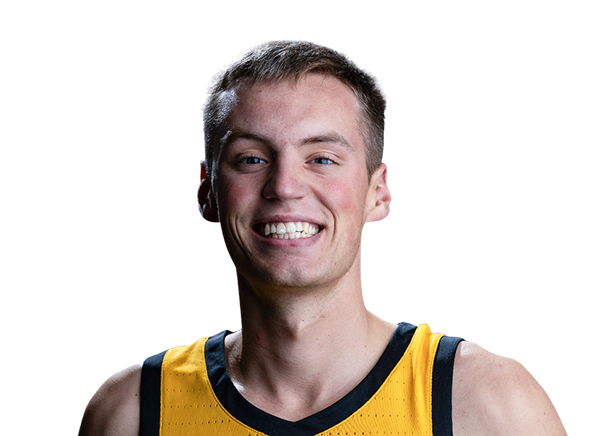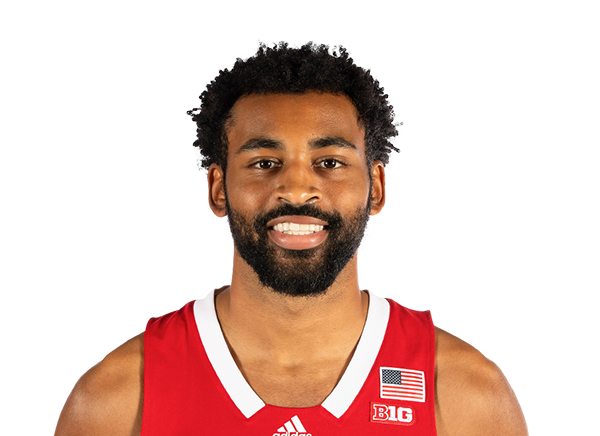Full Analysis
Offense
Payton Sandfort is among the most prolific and mechanically sound shooters in the 2025 NBA Draft class. At 6 '7”, he possesses prototypical size for a wing and a compact, repeatable shooting form that translates seamlessly across various shot types: catch-and-shoot, movement threes, and midrange pull-ups. His junior season production speaks to this capability, where he hit 37.9% of his threes on extremely high volume (over 7 attempts per game), while converting 91% from the free-throw line. His mechanics are clean, with a high release, minimal dip, and consistent footwork, even on shots off movement or deep relocation. He doesn’t require perfect setups or complex actions to generate quality looks; his spatial awareness and ability to read screens allow him to stay active and available as a shooter. Even when guarded, he maintains composure and accuracy, ranking in the 80th percentile on contested catch-and-shoot jumpers during his junior year.
Beyond his jumper, Sandfort functions as a reliable connective piece in half-court offense. While not a dynamic ball handler or advantage-creator, he makes sharp, timely reads when defenders close out too hard. He’s an unselfish passer who leverages shot fakes and quick one or two-dribble counters to collapse the defense and make kick-out or dump-off reads. His assist-to-turnover ratio (2.0) underscores his ability to keep the offense flowing, especially in structured systems. In transition and early offense, he keeps his decisions simple, either running to the arc or hitting the advancing pass. He’s also an intelligent cutter who recognizes soft spots in the defense, creating efficient opportunities without the ball.
However, his shot creation is limited. Sandfort doesn’t possess the burst or handle to regularly separate against athletic defenders or finish through contact at the rim. His drives are deliberate and functional but lack dynamism. When forced into difficult decisions, especially in transition, he can occasionally get sped up and commit turnovers. These instances aren't frequent, but they cap his ceiling as a secondary scorer.
It’s also worth noting that Sandfort's senior-year dip in shooting percentages (49% on twos, 34% on threes) occurred while he was battling through serious injuries: torn labrums in both shoulders and a broken wrist. Evaluators should weigh his junior season more heavily, where he ranked in the 94th percentile in offensive efficiency and exhibited elite shooting traits across nearly 500 possessions.
Defense
Defensively, Sandfort competes with effort and awareness, but he faces significant limitations in space. His positional size allows him to absorb contact and contest shots against similarly sized wings or stretch forwards, and his understanding of team defense is evident, he communicates, rotates, and rarely loses track of his assignment. His rebounding numbers (over 6.5 per game as a junior) are decent, and he positions himself well on the glass. Against non-physical stretch forwards or stationary shooters, Sandfort is generally serviceable, even offering moments of deterrence with well-timed contests.
The concern lies in his lateral agility and recovery speed. Sandfort doesn’t change directions fluidly and can be exposed by quicker wings or guards who attack closeouts or force him to navigate space. His screen navigation is below average, and he struggles when forced to defend in space, particularly against movement-heavy offensive sets. Even when he anticipates correctly, he lacks the tools to recover if beat. On switches, he often provides a target for opposing offenses to isolate.
There are flashes of positive defensive moments, with smart positional contests, solid post defense against non-dominant scorers, and timely help rotations, but they’re not consistent enough to offset his below-average foot speed. He’ll likely require scheme protection at the NBA level, functioning best alongside strong point-of-attack defenders and rim protectors. His defensive floor is higher in disciplined team schemes where his awareness and effort can shine, and his role doesn’t ask him to contain primary creators.
Looking Ahead
Payton Sandfort projects as a movement shooter and floor spacer whose offensive gravity can open up driving lanes and offensive flow. His junior season, where he shot 38% on threes, 91% on free throws, and ranked among the most efficient high-usage players in college basketball, offers a clearer picture of his upside than his injury-plagued senior year. He profiles similarly to players like Sam Hauser: smart, tall, high-IQ shooters who can function in NBA spacing without demanding high usage. Sandfort adds a little more as a passer and rebounder than typical specialists, which could help him stick as a rotation piece.
The key swing factors will be whether his defense can hold up enough to avoid being targeted nightly and whether he can return to the elite efficiency he showed when healthy. His lack of athleticism limits his versatility, but players with size, shooting, and feel always earn long looks, especially in second units or systems that demand shooting around stars. With continued development in his lower body strength and lateral agility, he could evolve into a dependable 3-and-slightly-more wing. Given his foundational skills and production when healthy, Sandfort offers a safe offensive floor and a defined NBA role as a movement shooter with connective qualities.


